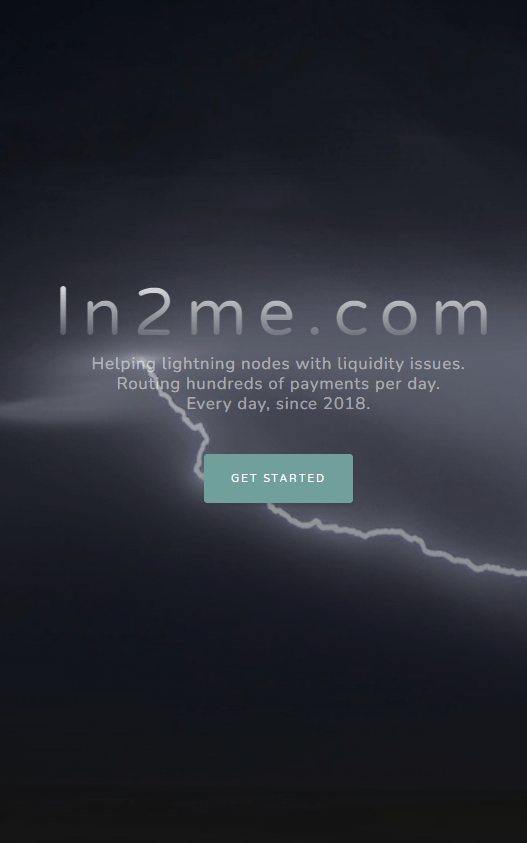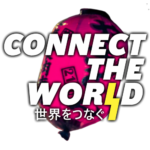
Dmitry Laptev | Connect the World
Stef & Ed sat down with the man behind LN2ME but maybe more surprisingly: the man behind the Augustus Baggins meme (isn’t he?).
Dmitry runs the infamous LN2ME node and provides a great service for node operators to get dual funded channels. There’s some trust involved with this service but you can verify his reputation on all major platforms, and: we have his face on camera right now! All jokes aside, Dmitry is a real visionary and when we asked him what he would like to see developed on the LN he said:
‘The idea I am pushing recently is that we need to think more about reducing friction for the real-world transactions from mobile wallets to merchants. Unfortunately maximizing routing profits often contradicts this use case. I would like to see “liquidity as a service” nodes that would automatically manage liquidity for the actual users in a trustless way.’.

Lightning Network
What was your first experience with the lightning network and do you still know what you did/saw at that moment?
Ordering stickers from the Blockstream store. It did not work on the first try, of course, because there was no route, and then I struggled to find the address of the blockstream node to open a channel to it.
Is it possible to use Lightning at local merchants in your neighborhood?
Not really, no. The bitcoin meetups here are quite good, and there you can buy things with Lightning. There was one cafe I would go to that accepted bitcoin before Lightning, but it closed :/
What specific things about lightning don’t you understand yet, but really want to learn?
How taproot affects lightning, how it enables Taro, for example.
In Episode 39, Bastien Teinturier (Acinq) had an interesting question. What is your point of view?
Do you think lightning network works if on-chain fees are consistently high?
Hah, great question. We actually had a sustained high-fee environment a couple of years ago, and it was quite a pain to use LN back then: force-closures could wipe out tens of thousands of sats. But also people were more careful and considerate. I believe longer term when we move towards circular economy and liquidity automation, and interoperability improves – the situation will get better.
What security concerns of the lightning network do you think are undervalued nowadays?
This has been said again and again, but the griefing attack on the lightning network is still a concern. And in general, there are many problems that can arise from locking someone’s liquidity for a time at no cost.
If you look back on last year, what is the most stunning thing (thing/application/movement) you have seen on the lightning network?
Taro is probably one, not in itself, but as an enabling example of further L3 solutions.
We have LND (lightning labs), c-lightning (blockstream), eclair (Acinq) and some more… These are all implementations on the second layer. What lightning implementation do you prefer at the moment?
I honestly do not know. I have been running LND since the beginning, because this was the easiest for devs to hack on top of. c-lightning is much more optimized and focused, and also became superior customizable with the plugins, but it clearly lacks in out-of-the-box features and tools. Finally I think eclair is really an underappreciated implementation. It just works!
Developments in the Lightning Network and all tools around it are happening at an incredible speed! So what’s the most necessary to develop to get more pre-coiners aboard? And what is being done to make it more user-friendly?
The idea I am pushing recently is that we need to think more about reducing friction for the real-world transactions from mobile wallets to merchants. Unfortunately maximizing routing profits often contradicts this use case. I would like to see “liquidity as a service” nodes that would automatically manage liquidity for the actual users in a trustless way.
We talked with many guests about how important speed and deliverability are for adopting the Lightning Network. For example, nobody wants to wait 8 seconds for a payment to be processed. What do you think can help to make the Lightning Network much faster in the near future?
Path finding is somewhat broken at the moment and should be improved. Response time could be one of the factors, for example. But there should also be some information sharing to enable pathfinding from mobile wallets like Breez, because they will not be able to measure all of the variables on their side.
Do you believe it is necessary for the development of the Lightning Network in the future that everybody has some form of a non-custodial Lightning Node running?
No, I think being able to go non-custodial is very important and the experience should constantly be improved. But it is not necessary for everyone. We will always have some tradeoffs, and in the foreseeable future for beginner users I think it is ok to use WoS, for example.
What do you see as the most important feature for the Lightning Network that is currently missing?
There are layers and layers of redundancies, backups, access controls and management tools that should be implemented before we can compare to the robustness of traditional finance institutions.
Support us in our mission
Do you like this article and our other content? Donate and support us in our mission to create a worldwide distributed Lightning Network by connecting countries around the world and bringing The Lightning News to you first!
Follow The Daily Moon also on Telegram and Twitter!
ln2me Service

Since 2018, your ln2me node routes hundreds of payments per day. With this node you provide a service to help Lightning Operators with liquidity issues.What are the possibilities for Lightning Node owners on ln2me?
For many nodes it is hard to bootstrap high-quality inbound liquidity. If you are starting a routing node, and have ten channels – you can open a balanced channel with my node, so my node would essentially commit funds towards your node, for free. That is it. You get some good-quality inbound, your routing will improve.
While incoming liquidity has become more important lately, you notice that more and more liquidity solutions are emerging. User-friendliness is very important here, but also the demand for trustless opening dual funded channels. Are you busy with building a feature like that? And what are the trade-offs at the moment?
I get this question a lot. Just for reference, I implemented the service before trustless dual-funded channels existed. They are awesome, and I highly recommend using them when possible! I do not support it currently, because the workflow for the trustless setup is more error prone. If both parties are online and ready to debug – this is not a problem, but my service is fully automated, so I opted for an easier workflow at the cost of trust. If I had more time, I would likely be able to make it work, but at the moment you have to trust my node. Luckily it is not easy to verify my reputation in groups like plebnet.
Do you think that everything should ultimately be trustless or are there advantages to the need for trust that will eventually play a part in the future of the Lightning Network?
Everything should aim to be trustless. But trust is an important part of building communities. And communities are what ultimately drives the adoption.
Is the ln2me node the first node you build? And can you tell us more about the history of the node? Did you start right away with the ln2me liquidity service?
Yes. I was reading up on the Lightning Network, and realized that getting inbound liquidity will be a huge problem for nodes. So I started the node already with the idea that this could be my part in the early days of the network. Of course I was not alone who noticed this and soon other services appeared, but I think for a couple of years ln2me was the only place where you could get inbound for free.
The ln2me node has around 502 channels and the oldest channel is more than 3 years old and you have multiple channels of 1BTC and even one with 2BTC liquidity. How important are those Wumbo channels when running a routing node?
Not really important. At the end of the day the smallest channel on the route limits your ability to route large payments, so I barely ever see payments larger than 3-4 million sats. On the other hand, it is a pain to manage liquidity over these couple of huge channels, because one 2 BTC channel can suck up liquidity from tens of good routing channels.
You don’t yet use zero base fee. I’ve read that this helps you to have less transactions but more value. Can you explain this?
My node is actually quite overloaded, and I regularly see its responsiveness going down. So I employ different strategies to limit the number of routing attempts through my node. I set min/max htlc size per channel, I set protective fees on depleted channels, and I also keep the base fee to 1 sat, because if I remove it – there are too many payment attempts going through my node.
For those who want to run a routing node the most valuable asset is to know where the traffic is.
How do you find this information?
I stopped tracking this a long time ago, because it is too hard, even though it is very rewarding 🙂 Now I am a “meta” routing node: I am serving the needs of routing node operators to rebalance their channels and get liquidity. It is now up to them to figure out where the traffic is.
What advice would you give someone who is experimenting with running a routing Lightning Node?
Do not expect huge progress fast, It takes a lot of time to gain reputation in the network. But do not sit and wait either – learn and experiment.
What tools do you use to do your channel management? And how much time does this cost you on a weekly basis?
Python. I wrote all the tools myself, from rebalancing to reporting. Now I know exactly what to push when, and most of the things I automated away. So it takes me about 20 minutes per week to check on the basic things and restart the node from time to time.
In the beginning of this year everybody had a lot of issues with the channel database file, causing problems with path finding. I read that you needed compacting the database on a daily basis because it was growing by 3-6GB per day.
What was the main cause of this problem when taking into consideration that the Lightning Network is growing as a whole each day?
Failed routing attempts and the bolt database that does not free up the space automatically. LL improved the situation a lot with 15.0, and further in 15.1, but it is still quite annoying. Looking forward to migrating to postgresql at some point when it is generally safe to do that.
Do you think that in the end Lightning distributions like LND, Core Lightning, Liquid and Eclair from Acinq will all be interoperable in some way?
Never fully supporting all features of each other: they are focusing on too different things. But the interoperability of the basic functionality I believe is getting better and better, mostly thanks to the better competition between the implementation and community support.
In Episode 21 we had Carsten Otto in the show and asked him about #pickhardtpayments. This was about the facts that Rene Pickhardt talked about that larger channels will be preferable in path finding for payments and thus getting Node Operators more routing. Is this true? And what channel liquidity would you recommend to Node Operators that want more Routing on their node?
Larger is of course better all things equal, and yes, larger channels have an advantage in pathfinding. The problem is that all things are never equal, there are always trade offs. Even LNBIG had to give preferential treatment to some nodes vs. others. I recommend starting with the amount that you will be comfortable spreading over 20-30 nodes, and then sizing up and down from there: if the balance is mostly on your side and the payments are small – make the channel 30% smaller. If payments going through your channel are moving a quarter of the liquidity – you should clearly double up the channel.
Connect the World has a new Lightning Node running on Raspiblitz and running in Hybrid mode, thanks to TunnelSats. Our speed is now 0,17 second instead of 14 seconds running on tor. How important is speed when running a routing node? And is stability linked to this?
An extreme example. I sometimes forget to compact the DB and it grows larger than my hardware can handle. My node becomes terribly slow at this moment, I get 10x less routing events per day and a number of force-closures. Not pleasant, please try to keep your node fast 🙂
Extra
What kind of layer three solutions would you like to see soon?
Well, L3 is a bit of a loaded term, different people understand different things. “Liquidity as a service” abstractions is what I would like to see. As a merchant I do not want to buy liquidity and set fees and rebalance and still experience that Breez and Muun nodes are not able to route to me. I want this to be abstracted away from me by someone.
Lightning Labs worked on Taro, an open protocol (made possible by taproot) for transferring non-bitcoin tokens in Bitcoin transactions and LN payments. What are your thoughts on Taro?
I do not know much about it. Sounds really cool
And are these the kind of developments that can make a difference when thinking of the progress of further adoption?
Do not know enough to comment
What kind of (LIGHTNING BASED) app would you like to see on your mobile in the next 4 years?
Any kind of freelance or micro task app, we need to boost circular economy
Do you use services like satsback.com, lollie or others?
Nope, does not work well in Switzerland
What does self-sovereignty mean for you personally?
Ability to do whatever I want with my money without asking anyone’s permission
Do you use data from tools like lnrouter.app , lnnodeinsight, amboss, to manage your node in a better way ? What data do you think is usefull?
Not very often actually, because I have a lot of tools of my own. Sometimes I used lnrouter, because I think probing data is very valuable and from time to time I use Amboss because the community signals are awesome
What’s the biggest problem you had with your node?
After upgrading to 13.0 I think I had a problem with some older channels not being correctly handled in the database migration that caused a lot of troubles. Luckily the devs were quite responsive. The problem is that’s unlike with many other bugs this time I was one of the few nodes that had these types of channels
What type of hardware do you use to run your node ? (Cloud, workstation…)
Cloud
For those who want to run a routing node the most valuable asset to know where the traffic is.
What’s the best way to getting that information?
Community, trial and error

Rindingvijk


LNcapital, node management for professionals | Henrik Skogstrøm








